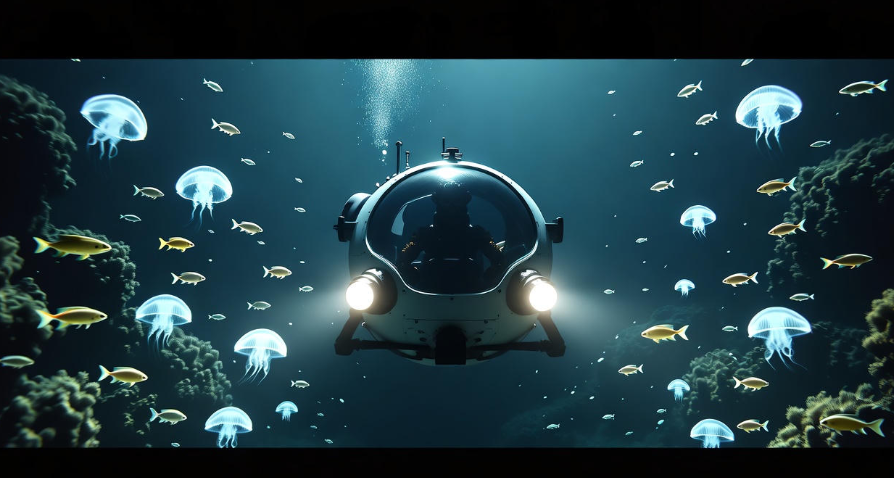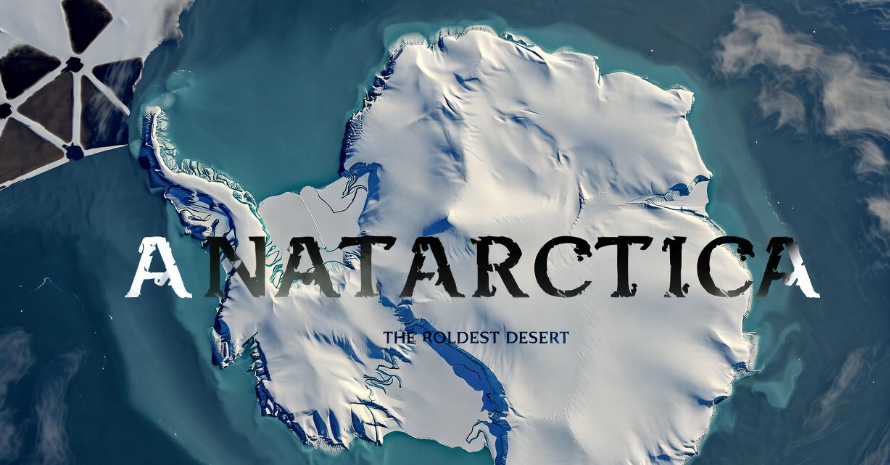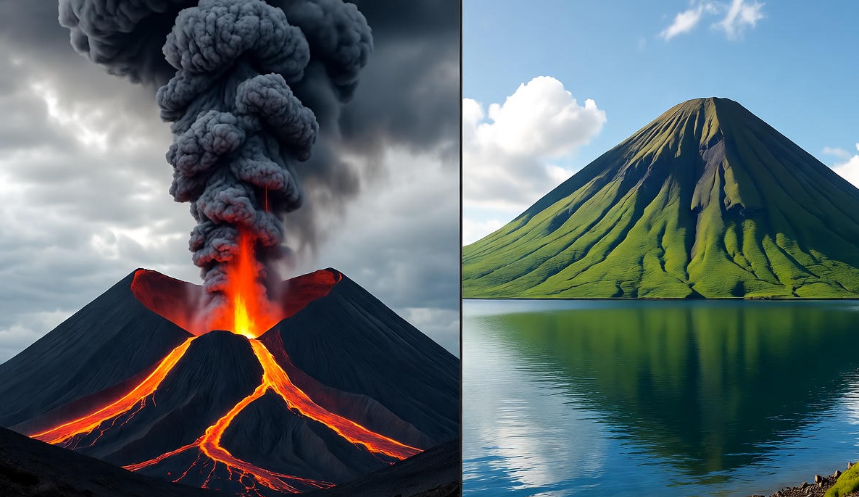The ocean… it’s mysterious, powerful, and beautiful. But what really lies far beneath those dark blue waves? Most of us have only seen the surface — the shimmering water under the sun, the waves crashing against the shore, maybe a few colorful fish near coral reefs. Yet, beneath that calm beauty hides an entirely different world. A world so deep, dark, and strange that only a handful of people and machines have ever seen it. Let’s take a dive into the deepest parts of our planet and see what’s hiding down there.
The Ocean: A Hidden World
Did you know that more than 70% of Earth’s surface is covered by oceans?
But here’s the shocking part — we’ve only explored around 5% of it! That means 95% of the ocean is still a mystery. Think about it — we know more about the surface of Mars than we do about our own ocean floor.
The ocean isn’t just one big pool of water; it’s divided into different zones depending on how deep you go. Each zone has its own temperature, pressure, light levels, and creatures that call it home.
Here’s a quick breakdown of the ocean zones:
| Zone Name | Depth (approx.) | Light Availability | Common Life Forms |
|---|---|---|---|
| Epipelagic (Sunlight Zone) | 0 – 200 meters | Full sunlight ☀️ | Tuna, dolphins, plankton |
| Mesopelagic (Twilight Zone) | 200 – 1,000 meters | Faint light | Lanternfish, squid |
| Bathypelagic (Midnight Zone) | 1,000 – 4,000 meters | No sunlight | Anglerfish, giant squid |
| Abyssopelagic (Abyss) | 4,000 – 6,000 meters | Total darkness ⚫ | Deep-sea jellyfish |
| Hadalpelagic (Trenches) | 6,000 – 11,000 meters | Extreme pressure | Amphipods, snailfish |
The Deepest Place on Earth
The deepest known point in the ocean is the Mariana Trench, located in the western Pacific Ocean. Inside this trench lies a spot called the Challenger Deep, which plunges down to about 10,935 meters (35,876 feet) below sea level. Just imagine — if you dropped Mount Everest into the trench, its peak would still be more than 1.5 kilometers underwater!
At that depth, the pressure is over 1,000 times greater than what we feel at sea level. To give you an idea, it’s like having 50 jumbo jets pressing down on you at once! No human could survive that without special equipment.
What Lies Beneath: Strange Creatures of the Deep
When you go deeper into the ocean, sunlight fades, and life changes dramatically. The creatures down there look nothing like the fish we see near the surface. They’ve adapted to survive in complete darkness, freezing temperatures, and crushing pressure.
Here are some bizarre deep-sea creatures that truly exist:
-
Anglerfish – Famous for the glowing lure on its head. The female uses this bioluminescent “fishing rod” to attract prey in the pitch-black darkness.
-
Giant Squid – Once thought to be a myth, it’s real and can grow over 12 meters long. It’s the inspiration behind the ancient “Kraken” legends.
-
Goblin Shark – Often called a “living fossil,” this pink, long-nosed shark looks like something straight out of a nightmare.
-
Dumbo Octopus – Adorably weird! It has ear-like fins that make it look like Disney’s Dumbo flying through the water.
-
Deep-sea Dragonfish – Has transparent teeth and a light-producing barbel to lure prey.
-
Vampire Squid – Doesn’t suck blood! It gets its spooky name from its dark color and cape-like webbing.
These creatures survive where humans can’t. Many of them use bioluminescence — the ability to make their own light. It’s like having natural glow sticks to communicate, hunt, or defend themselves.
The Ocean Floor: More Than Just Mud
The seafloor is not just empty and flat. It’s full of mountains, volcanoes, and trenches. In fact, there are underwater mountain ranges longer than any found on land! These are called mid-ocean ridges, where the Earth’s tectonic plates slowly move apart and new crust forms.
There are also hydrothermal vents — cracks in the ocean floor where super-hot water (up to 400°C) gushes out. Instead of sunlight, life here depends on chemosynthesis, where bacteria convert chemicals into energy. Whole ecosystems thrive around these vents — giant tube worms, crabs, and shrimp that don’t need sunlight at all. Imagine a world where life grows without the sun. That’s real, deep under our feet.
Why We Explore the Deep
You might wonder, why does exploring the deep ocean even matter? Well, there are a few powerful reasons:
-
New Lifeforms: Every time scientists explore, they discover new species — sometimes hundreds in one expedition.
-
Medicines: Many marine organisms produce unique chemicals that could help fight diseases like cancer or infections.
-
Climate Understanding: The ocean absorbs carbon and heat, affecting global climate patterns. Knowing the deep helps us predict climate change.
-
⚙️ Resources: The seafloor holds valuable minerals and metals. But mining there is controversial since it could destroy fragile ecosystems.
Exploring the deep ocean is like exploring another planet right here on Earth — mysterious, dangerous, and full of possibilities.
Deep-Sea Exploration: How Humans Got There
Reaching the deepest points of the ocean isn’t easy. The pressure, darkness, and cold make it one of the hardest environments to explore. But over time, humans have developed amazing technology to go deeper and deeper.
Some key milestones:
| Year | Mission/Explorer | Depth Reached | Notes |
|---|---|---|---|
| 1960 | Trieste (Piccard & Walsh) | 10,916 m | First manned dive to Challenger Deep |
| 2012 | James Cameron | 10,908 m | Filmmaker’s solo dive in Deepsea Challenger |
| 2019 | Victor Vescovo | 10,935 m | Reached record depth, discovered plastic waste |
Yes — even plastic was found at the ocean’s deepest point. That’s both amazing and sad. It shows how far human impact has reached, even into the most remote corners of our planet.
Life in Darkness and Pressure
The conditions at the bottom of the ocean are unimaginable. The temperature is just above freezing, and sunlight doesn’t reach at all. Creatures that live there have some fascinating adaptations:
-
Soft, flexible bodies – to withstand pressure.
-
Slow metabolism – to save energy since food is scarce.
-
Bioluminescence – to attract prey or mates.
-
Huge mouths – because you can’t be picky when food only comes once in a while!
Some deep-sea fish can even swallow prey larger than themselves. Talk about extreme dining! ️
Interesting Facts About the Deep Ocean
Here are a few quick, mind-blowing facts you might not know:
| Fact | Details |
|---|---|
| The average ocean depth | Around 3,688 meters |
| Deepest trench | Mariana Trench, 10,935 meters |
| Deepest fish found | Snailfish, about 8,300 meters |
| Deepest shipwreck | USS Johnston, found at 6,500 meters |
| Estimated unknown species | Over 2 million yet to be discovered |
The Hidden Dangers of the Deep
The deep ocean is fascinating, but it’s also full of hazards — both natural and man-made.
-
Pressure and Cold: No ordinary submarine can survive without cracking.
-
Darkness: It’s pitch black, so visibility is almost zero.
-
Pollution: Plastic waste, oil spills, and chemicals have reached even the deepest waters.
-
Noise Pollution: Ships and sonar interfere with marine life communication.
-
Climate Change: Warming waters and acidification threaten deep-sea ecosystems.
These issues remind us that even the deepest parts of the ocean aren’t untouched anymore. Humans have already left their mark.

What the Future Holds
New robotic submarines, drones, and AI-powered machines are helping scientists explore deeper than ever. Some experts believe that the deep ocean may hold clues to the origins of life itself. Others see it as a potential source of future medicines and technologies.
In the next few decades, we might discover creatures that rewrite what we know about biology — maybe even entirely new ecosystems. The ocean keeps secrets, but it doesn’t keep them forever.
Final Thoughts
The ocean’s depths are a reminder of how small we really are. Every layer you go deeper feels like entering another planet — alien, dark, and breathtaking. From glowing fish to boiling vents, from forgotten shipwrecks to life that thrives in darkness, it’s a world that never stops surprising us.
As humans, our curiosity drives us to explore, but we must also protect what we discover. Because once it’s gone, it’s gone forever.
So, next time you look out at the sea, remember — beneath those waves lies a world we’ve barely begun to know.
FAQs About the Deep Ocean
1. How deep is the ocean?
The average depth of the ocean is around 3,688 meters, but the deepest known point — the Mariana Trench — goes down to about 10,935 meters.
2. Can humans survive at those depths?
Not without a specially designed submersible. The pressure would crush a human instantly at those depths.
3. Is there light at the bottom of the ocean?
No sunlight reaches below about 1,000 meters. Beyond that, it’s total darkness, but some creatures make their own light using bioluminescence.
4. What’s the scariest creature found in the deep ocean?
Many would say the Goblin Shark or the Anglerfish — they look terrifying but are actually harmless to humans.
5. Are there still places in the ocean unexplored?
Absolutely. Over 80% of the ocean floor remains unmapped and unexplored.
6. Have we found life in the deepest parts?
Yes! Microbes, snailfish, and even crustaceans have been found living at the very bottom of trenches.
7. Can we live underwater one day?
Maybe partially. Scientists are working on underwater habitats, but the deep ocean’s pressure and lack of oxygen make it nearly impossible for long-term living.




